Learning the fundamental motor skill of kicking begins in the early years but does not usually mature until the age of 6-7 years. Kicking skills will continue to be refined over the years with practice and coaching.
The enjoyment toddlers experience with learning to kick a colourful, bouncy ball is evident with the smiles on their faces – but also because most often kicking is a social activity and involves more than one participant to make it a fun game.

However, learning to kick requires the child to be able to balance on one leg (the non-kicking leg) whilst simultaneously swinging through the kicking leg to strike the ball. Kicking is a whole body action which also involves the use of the arms and trunk/hips to provide power.
Because we want children to have really positive experiences with balls from an early age, it is best not to become too focused on developing the correct technique for kicking in the early years, but rather to have lots of fun engaging in the activity.
Toddlers might stab at a large colourful ball with a toe and be delighted at the cause and effect. Pre-schoolers will be able to run and kick a ball with much more power as their dynamic balance skills have developed. Kicking with the top of the foot (shoelaces) should be encouraged in favour of toe kicking and as the child approaches 6-7 years – more refined use of the foot by kicking with the instep, or even the outside edges of the foot might be achieved with practice.
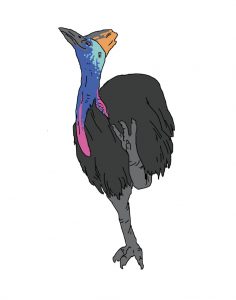
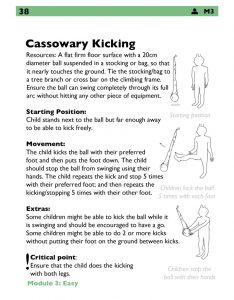
Introducing a child to kicking skills
The Animal Fun Activity of Cassowary Kicking introduces a child to the fundamental movement skill of kicking. A soccer ball is suspended in a stocking from a frame – if you are suspending from a height such as a pergola beam you will need to add some rope to the stocking as the ball should hang just above the ground.
The child stands in front of the suspended ball, balances on one leg and swings the other leg through to kick the ball – they are permitted to stop the ball swinging to repeat the action. The ball should be able to swing in a free arc – but it is good to be aware of some safety precautions.
You could do some investigating to learn more about Cassowaries – where they live, what they eat and how they nest. Cassowaries are dangerous animals and have very sharp claws so you would never approach one in the wild. Similarly, it is dangerous to walk past swinging balls when they are being kicked – so it might be wise to have a “no go zone” around this activity by marking out an area with chalk or placing down cones or witches caps so that children know that only one kicker is allowed in the zone at a time.
The Kangaroo-Boomerang Kick asks children to kick a ball towards a wall with enough force so that the ball bounces back to them. This activity teaches children to step up to the ball with their non-kicking foot, placing it beside the ball before they swing through with the kicking leg – thereby practising the motion of kicking from a stationary position to begin with. However, listening to a ball thumping into a wall might get a bit annoying after a while so it might be an idea to put a timer on this activity!
Cow Kicking uses the ball suspended in the stocking again, but this time children are encouraged to remain light on their feet and to prepare for kicking the swinging ball without bringing it to a halt.
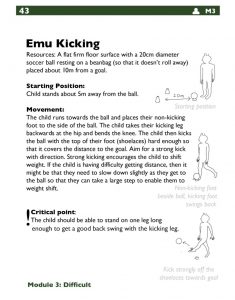
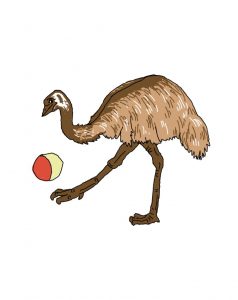
Developing more mature kicking skills
The Emu Kicking activity helps children to progress their kicking skills by running up to the target ball, planting the non-kicking leg and swinging through using the arms and trunk to gain power. From this position children can progress to kicking for distance and kicking for accuracy.
Stabilising the ball by placing it on a small beanbag or pile of sand will assist in the early stages. Encourage children to practise kicking with both feet as this is a wonderful skill to have if they are to graduate to playing more organised sports with balls. The Australian Rules Football process of kicking is much more complex as it involves a ball drop as well as the kick and requires an added element of hand eye coordination and timing.
If you don’t have a suitable outdoor space for a child to practice kicking, or perhaps you are worried about garden plants or reticulation sprinklers being damaged – then suspending the ball in the stocking is a great solution. Alternatively, you might encourage children’s accuracy with kicking my creating some makeshift goals for them to aim at.
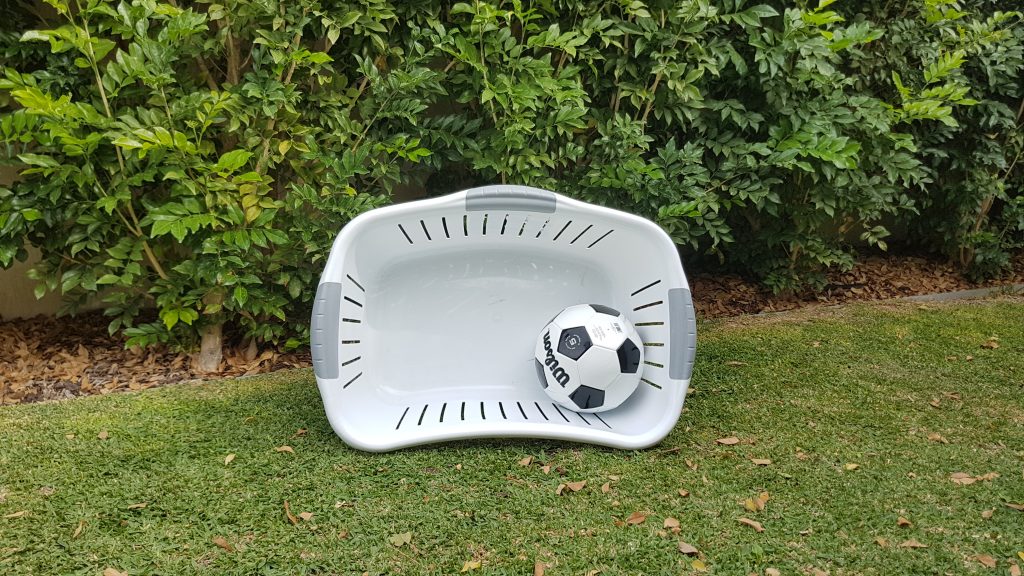
An upturned laundry basket could be an idea or perhaps you would like a DIY project to do at home with your children? Check out this video by Bunnings. The dimensions for these goals look quite small so make adjustments as required.
Practice Kicking
To encourage children to practice their kicking skills on a regular basis why not put a ball or two in a bag and keep them in your car? Then if you have time before school drop off or after school pick up, use the school grounds to have a kick – you can get in a walk around the oval (or a jog/run) whilst your child kicks for distance, runs to retrieve the ball and kicks again – or if there should be any goal posts available – practice some penalty shootouts – you can be the goalkeeper.
Animal Fun Activity Cards for these activities and all of the other Animal Fun movements can be purchased from the Animal Fun Shop
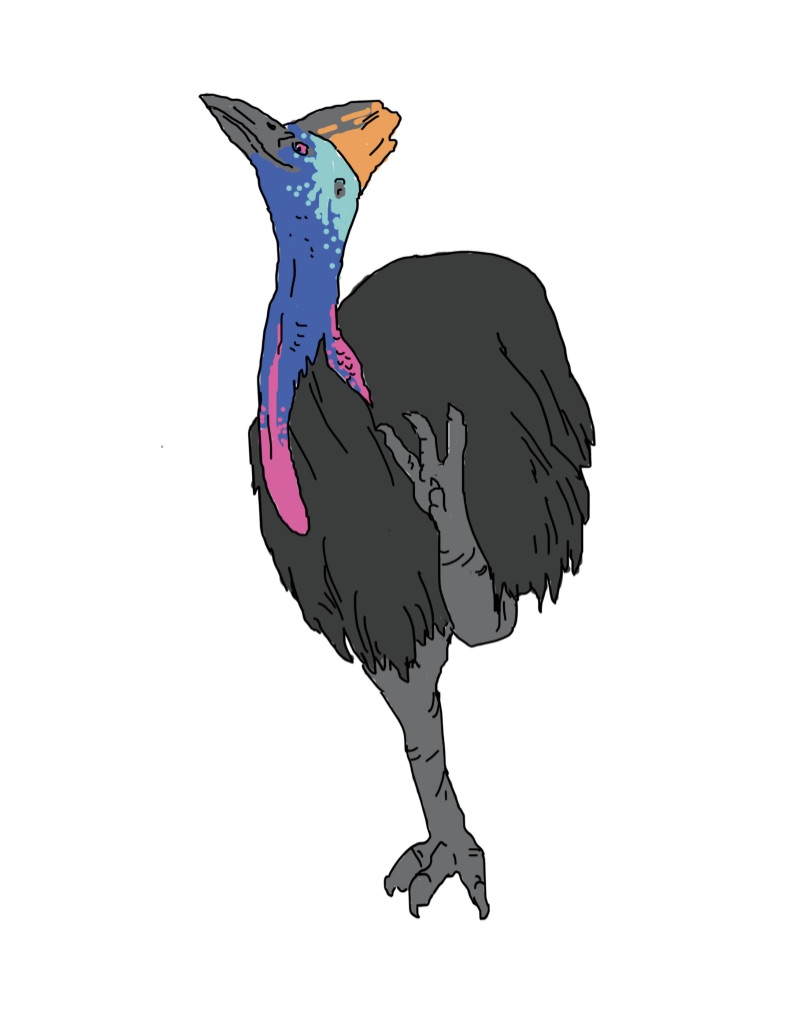





0 Comments